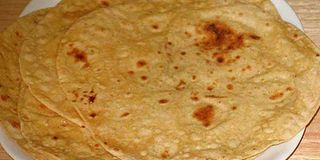Does your child have epilepsy? A change of diet will help

To cut out wheat, Diana had to leave out chapatti, mandazi, pasta, cereals, cakes and biscuits from her diet. PHOTO| FILE.
What you need to know:
To cut out wheat, Diana had to leave out chapatti, mandazi, pasta, cereals, cakes and biscuits from her diet. She also cut out all dairy produce, namely cheese, yoghurt, milk and ice-cream.
Adequate hydration is also important in such cases. This means no dehydrating drinks (tea, coffee, cocoa) and about two to three glasses of pure water daily. I also prescribed some fish oils, to help nourish Diana’s brain.
Two weeks on, even though Diana had had a seizure, the swellings, which had persisted for nine months, had almost gone (sugar appeared to be the trigger for the seizure Diana had had).
Diana was just three-and-a-half years when I met her, yet she had already been on a barrage of medication. She had been diagnosed with epilepsy a year earlier, and since then, had started to develop swelling on her hands and legs, around the joints.
Despite taking anticonvulsant medication, she still had a seizure every two weeks. Furthermore, the swelling around her wrists, elbows, ankles and knees, was hard and showed no sign of subsiding, despite taking powerful steroids.
When her mother, Natalie, brought her to see me, it was a leap of faith on her part. Deep down, she felt that there was little I could do to make a difference.
In children, like with adults, there are often additions to the diet that muddy the water and make it difficult to see what is going on.
Even though Natalie had brought with her a detailed food diary, there seemed to be no obvious link between Diana’s seizures and what she was eating.
That is why the first thing I asked her to do was to strike wheat and dairy from her diet. I realise that this is a fairly common suggestion when dealing with children’s ailments, but I find that omitting these foods allows you to see what’s really going on.
What’s more, the proteins found in wheat and dairy (gluten and casein) can be fairly damaging to the intestines, and in cases of epilepsy, their omission can give the body some reprieve.
To cut out wheat, Diana had to leave out chapatti, mandazi, pasta, cereals, cakes and biscuits from her diet. She also cut out all dairy produce, namely cheese, yoghurt, milk and ice-cream.
Adequate hydration is also important in such cases. This means no dehydrating drinks (tea, coffee, cocoa) and about two to three glasses of pure water daily. I also prescribed some fish oils, to help nourish Diana’s brain.
Two weeks on, even though Diana had had a seizure, the swellings, which had persisted for nine months, had almost gone (sugar appeared to be the trigger for the seizure Diana had had).
A further two weeks on, Diana hadn’t had a seizure. Another month after that, still no seizure.
That’s when we began to reduce the dosage of her medication.
Sometimes, we feel that going to the doctor and getting a bunch of medication is the best or only step to take. As this case, and many of the cases I talk about in this column show, it is not always the best solution. A little nutrition can go a very, very long way.
Diana responded very well to just a few omissions, but sometimes more are required.
However, ensure that the foods you cut out are replaced with equally, if not more, nourishing fare.
For example, when dairy is eliminated, calcium intake is ensured by increasing amounts of bone-building foods like beans, lentils, dark green vegetables, turnips, sesame seeds and even small-boned fish like dagaa.
Three months on, Diana is almost medication-free and hasn’t had a seizure.




